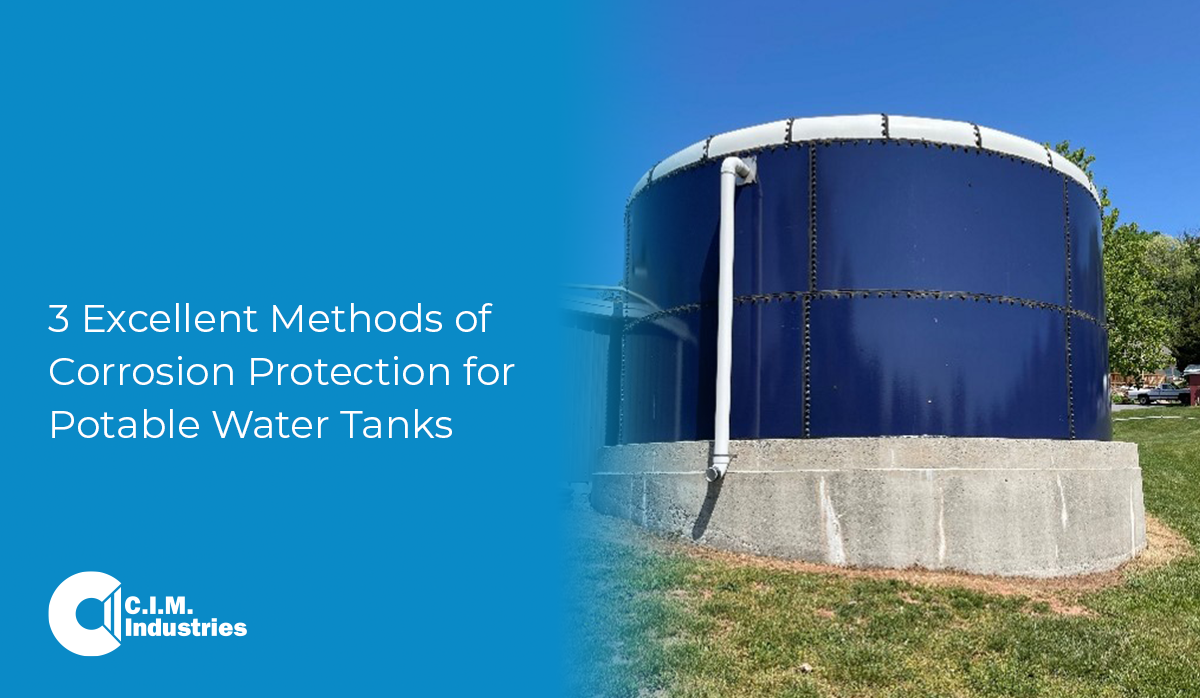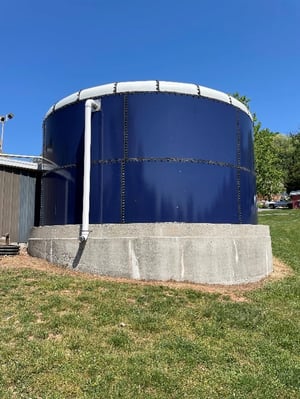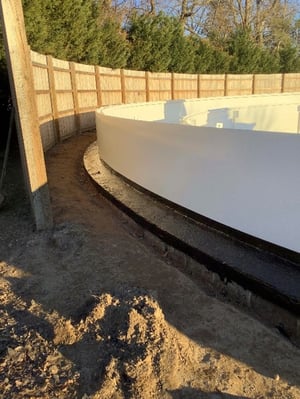
Drinking water infrastructure provides clean, potable water to countless people around the globe. In the United States (including territories) alone, there are over 145,000 active public water systems and nearly 2.2 million miles of underground pipes delivering safe, reliable water to millions of people. Continued maintenance and upgrades to this infrastructure are critical to the communities and asset owners they serve.
Water tanks are one component of the drinking water infrastructure system. These vessels provide a means of storing the water until it is called upon for use. To reliably supply clean water day after day, specific steps must be taken to protect these tanks from the effects of the environmental conditions in which they are located.
Corrosion is an enemy of water tanks and can cause severe problems in providing safe, potable drinking water. To provide corrosion protection for potable water tanks, we must understand what causes the corrosion to occur. In this blog, we will focus on steel/metal water tanks.

Exterior of a glass fused bolted steel tank
what is Watertank corrosion?
Corrosion occurs in steel or metal tanks when the metal oxidizes, leading to deterioration of the metal. Oxidation results from an always-occurring electrochemical process between a metal (such as a tank wall) and an electrolyte--such as soil or water (or whatever the tank stores). The three main components required for corrosion are oxygen, metal, and electrolyte.
Rust is the most common type of corrosion. Corrosion can lead to tank failure as the metal wall oxidizes and rusts away. This is a significant problem with water tanks; hence an entire engineering field is devoted to it!
Methods to Prevent Corrosion
Corrosion is an ever-occurring process. To inhibit it, we must either place a barrier between the substrate (metal) and the electrolyte or provide another item with which the electrolyte can interact. In this regard, tank engineers take a layered approach to corrosion prevention. We’ll focus on the core three.
- Interior tank floor and walls
- Exterior tank
- Cathodic protection system
1) Interior Tank Waterproofing
First, a polyurethane, epoxy, or other lining system is commonly used to coat the tank wall and floors. This provides mechanical separation between the tank shell and electrolyte, significantly reducing corrosion.
2) Exterior Tank Waterproofing
Next, a coating system is applied to the exterior shell of the tank. The exterior coating provides mechanical separation between the tank shell and environmentally sourced electrolytes, such as rain, groundwater, soil, etc., to reduce the corrosion process. A tank chime is a likely place for water to the pond, and as such, it is critical to protect this tank-to-foundation connection!
Related Article: 8 Reasons Why Hiring a Trained Waterproofing Applicator is the Right Decision

Tank chime coated with CIM polyurethane waterproofing
3) Cathodic Protection Systems
Lastly, providing a method of cathodic protection for the water tank is essential. In this type of system, a metal that corrodes more quickly than the tank shell is introduced to be the anode of the electrochemical process. It effectively redirects the corrosion onto itself, sacrificing itself to save the tank. This provides mechanical separation between the tank shell and electrolyte, significantly reducing corrosion.
In this system, the anode corrodes instead of the tank shell. Remember, the thermite weld in the galvanic anode system requires protection too! Coatings and cathodic protection systems provide a two-layer defense against corrosion for a steel tank.
Why Protecting Watertanks from Corrosion Matters
There are many factors to consider, such as the material from which the tank is constructed, what the tank is storing, environmental factors on the outside of the tank, and more! Corrosion prevention is an integral part of the water network throughout the country, without which reliable water services would face significant interruptions.
In summary, corrosion occurs in steel/metal tanks when the metal becomes oxidized, leading to deterioration of the metal. Coatings and cathodic protection systems provide a two-layer defense against corrosion for steel tanks. Identifying areas and conditions where corrosion is likely to occur can guide us in selecting an appropriate coating system and which cathodic protection system to use.
Chase Corporation's team of technical representatives can assist you with CIM's two-part urethane fluid-applied liners and coatings and pipeline product information to meet your application needs; please contact us.






